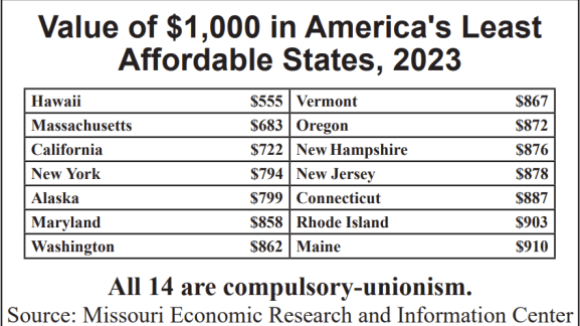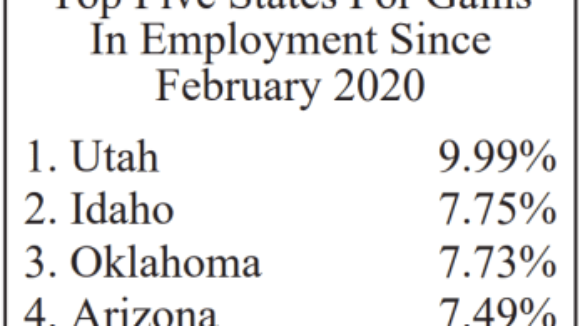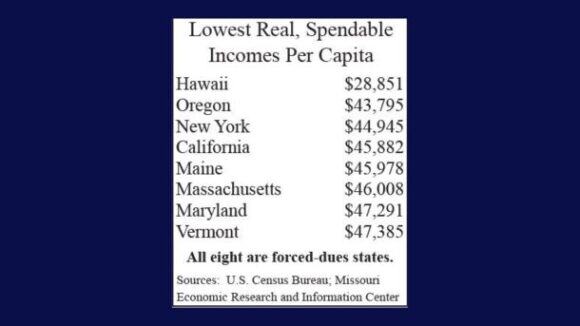Banning Compulsory Dues Curbs Cost of Living
On average, forced-unionism states are 23.2% more expensive to live in than Right to Work states. And decades of academic research show that compulsory unionism actually fosters a higher cost of living.
Virginia’s Right to Work Law has been a cornerstone of economic growth and job creation for decades. But now a group of liberal lawmakers are seeking to, in the words of Del. Chris Saxman (R-Staunton), “begin an irreversible trend towards compulsory organizing of employees.”
The News Virginian has taken notice of the effort proclaiming thanks that the initiatives died in the Republican-led House of Delegates. “Still, it is worth noting,” they opine, “the import of maintaining the state’s status as one of the best in which to do business, an honor accorded Virginia two years running by Forbes Magazine.”
While Rust Belt states such as Ohio, Michigan and Pennsylvania limp along in the shadows of their former industrial glory, places such as Virginia and Texas manage to advance even amid the current economic tumult in large part because employers know they can function here without the threat of a debilitating strike.
Texas, for example, has added 36,000 manufacturing jobs since 2004 and recorded $168 billion in exports last year. Ohio conversely lost 10,400 jobs over the last decade. Its population shrank by 362,000 during that time while Texas’ swelled by more than three-fourths that amount. The trends put the lie to the notion that the North American Free Trade Agreement, which Democratic candidates say they despise, adversely affects American workers. Which state in the union would figure to be more impacted by NAFTA than Texas?
Saxman and others on his side of the aisle are right to fight assaults on the right-to-work law. Those who would like a glimpse of life without it need only look to that trio of Northern states where prosperity is a relic of a thriving industrial heritage driven to ruin by manufacturer mismanagement and union greed. Organized labor’s day has passed into night; the same has happened to those states still in unions’ grip.

On average, forced-unionism states are 23.2% more expensive to live in than Right to Work states. And decades of academic research show that compulsory unionism actually fosters a higher cost of living.

Strong employment gains in Right to Work states are the reason more Americans are working now than pre-COVID.

Where forced union dues are permitted, workers and other people end up with less purchasing power.